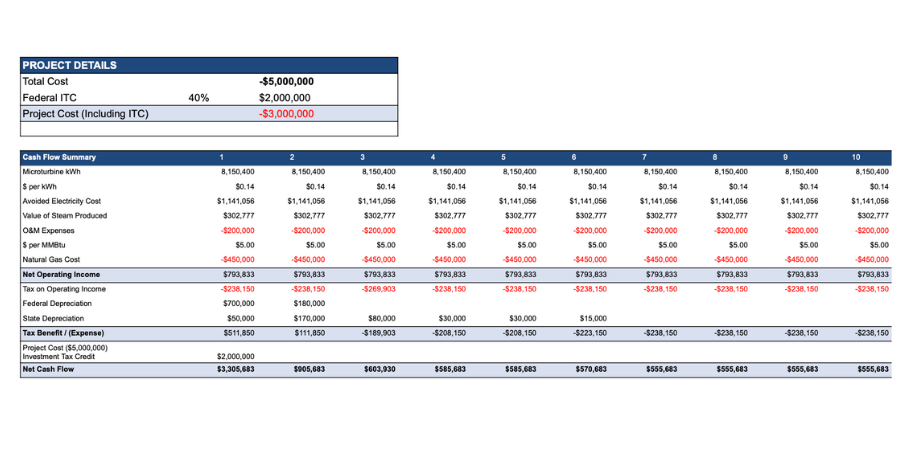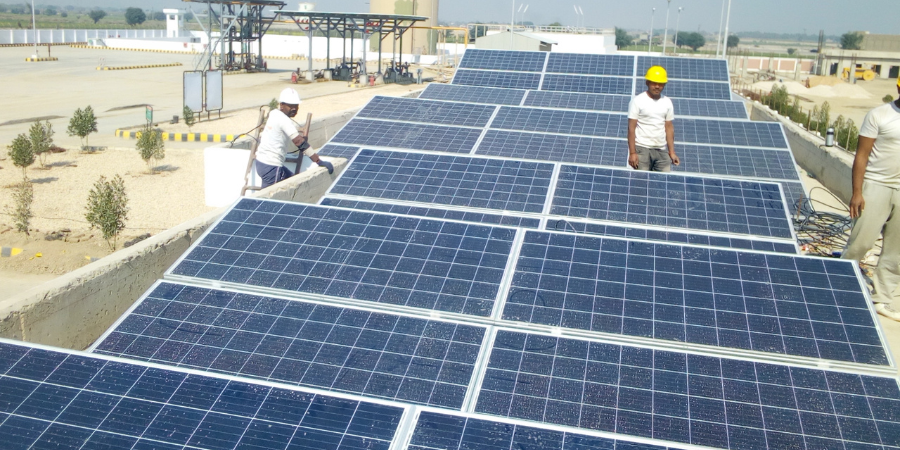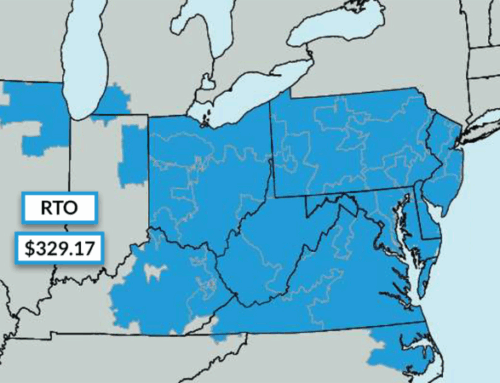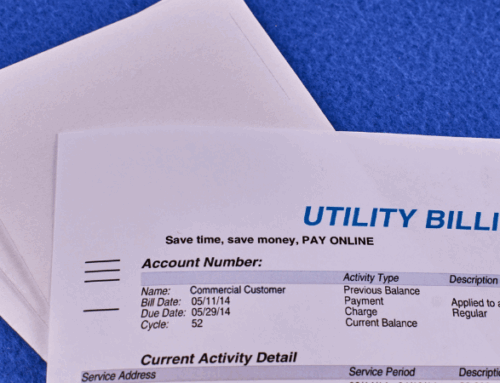Behind-the-meter energy resources include generating assets such as wind, solar, and battery storage that allow customers to offset their energy consumption. As demand on the power grid grows and energy prices continue to skyrocket, more consumers are turning to alternative energy generation as a way of offsetting costs. These demand-side strategies help to reduce business energy consumption and even provide a pathway towards energy independence. In this article, we will explore the concept of behind-the-meter (BTM) assets and emerging energy technologies, their benefits, and the challenges associated with implementing these resources.
Behind-the-Meter (BTM) Resources Explained
Behind-the-meter energy resources include energy systems that are tied directly to a consumer’s usage and not to the energy grid itself. These technologies, such as solar and battery storage, serve the consumer’s energy load directly and do not contribute to generation on the entire central electric system. In some markets, these assets are referred to as distributed energy resources (DERs) as they contribute to building micro-grid systems at the local level and give the consumer more independence from the regional electricity grid.
Types Of Behind-the-Meter Technologies
Today, BTM technologies are classified into several different categories. Let’s explore some of the more common types of behind-the-meter installations in the market.
On-Site Generation
On-site generation applications allow consumers to generate their own electricity on-site without having to rely on the local utility company for power. The most common form of on-site generation is natural gas co-generation, which fires natural gas to spin a turbine engine to produce electricity. This application allow consumers to avoid high electricity capacity and transmission costs and off-sets their electricity supply and demand costs on the power bill.
Behind-the-Meter Solar Energy
Behind-the-meter solar systems are installed on rooftops, carports, and ground mounts at the customer’s facility and allow the customer to generate their own electricity using photovoltaic (PV) panels. Becoming increasingly popular in many states with additional incentives, solar has a quick backpay period and comes with an array of tax incentives.
Small-Scale Wind
Smaller wind turbines installed on a customer’s property allow them to generate electricity from the wind. Typically found in rural areas or at industrial sites with high wind exposure, these turbines are an effective way to produce additional power.
Combined Heat & Power (CHP)
CHP applications allow consumers to generate electricity using on-site natural gas generators. The heat derived from the power production in the gas engine can be recovered and applied to heating and cooling applications. This can act as an energy efficiency measure allowing consumers to also offset steam and natural gas usage. CHP applications are typically found at industrial facilities that have a high steam or heat load.
Storage
Battery energy storage systems (BESS) allow consumers to capture excess generated electricity to be used at a later time. Storage systems enhance flexibility for a consumer and provide alternative backup resources for when the grid goes down. In some markets, consumers are even encouraged to monetize these systems by participating in the energy markets when their batteries are not in use.
Energy Efficiency
Energy efficiency applications, such as smart thermostats and LED lighting, are also behind-the-meter installations. These systems allow energy consumers to reduce peak load, participate in demand response programs, and ultimately reduce energy costs. Today, there are many energy efficiency incentives available to consumers to install these applications.
Building Energy Management Systems (BEMS)
Advanced BEMS systems allow large energy users to monitor and control their energy use in real time. Often engineered as a complex system of controls, these applications can automatically reduce power load at specific motors, adjust motor run times, and be calibrated to allow the building to run more efficiently.
Demand-Side Energy Management
While not directly tied to a technology application, demand-side management strategies such as load shifting and peak shaving are methods that can be applied behind the meter. These strategies include rearranging existing motor schedules to reduce peak demand and turning off motors during periods of high grid congestion. Together, they can help consumers to reduce peak demand and lower energy costs.
Benefits Of Behind-the-Meter Energy Resources
There are several consumer benefits associated with deploying BTM resources, such as reducing utility bills, understanding usage patterns, and capturing incentive money for lowering peak demand. Furthermore, these resources can help buildings with redundancy and make them more resilient during outages. Let’s explore some of the top benefits in more detail.
Reduction In Energy Usage
By becoming more energy efficient, end-users can greatly reduce their energy consumption, and thus, reduce energy bills. After all, your utility is an equation of your rate tariff multiplied by your usage. Reducing consumption directly results in savings.
Lower Demand, Capacity, And Transmission Charges
By reducing energy demand, consumers can also impact the prices they pay for delivery costs, capacity rates, and transmission tariffs. All of these energy charges are tied directly to demand, so when demand is reduced, the consumer pays less for electricity. This is becoming increasingly important in the PJM territory after they recently announced an almost 500% increase in electricity capacity rates for 2025/2026.
Backup Power
Another benefit to installing solar and storage behind the meter is that it can act as a backup source of electricity when the grid goes down. For example, consumers with solar and storage can run off the stored battery energy for a period of time when they await for an outage to be restored. Furthermore, those with on-site natural gas generators could eliminate their dependence on the electricity grid entirely.
Grid Support
Consumers with battery storage assets that are not being used in day-to-day operations can elect to register those assets with the local RTO or ISO. When doing so, it allows the consumer to dispatch energy into the grid to support ancillary services and frequency regulation. This also becomes a new revenue stream for the consumer.
Challenges And Considerations
If you’re thinking about installing a behind-the-meter energy application, you should consider your options closely. Installing these assets comes with an array of challenges and hurdles.
Upfront Costs
There is a high capital investment for solar, battery storage, and combined heat and power applications. While in some states the payback period can be less than 7 years, you should consider the financial commitment and research any rebates or tax incentives that might be available.
Intermittency Of Renewables
Another challenge comes with the intermittent nature of renewable energy. Solar only produces when the sun shines and wind turbines only generate electricity when it’s windy. Furthermore, many consumers do not have enough room at their facilities to install enough renewable energy to cover their entire electricity load. Relying solely on these assets as power resources can be risky. Many consumers elect to pair them with storage assets to eliminate some unpredictability.
Regulatory Hurdles
Installing these types of energy assets requires complex permitting and utility interconnection approvals. Furthermore, it is not so simple to sell excess electricity back to the grid without being registered as a market participant. New policies, such as the Texas Senate Bill 6 (SB6), require behind-the-meter assets to register with ERCOT and can even affect their financial viability due to increased transmission cost obligations.
Real-World Example
Here is a real-world example of a combined heat and power (CHP) proposal for a large university. The chart below shows the financial viability of the project and the forecasted payback period.

Is BTM Right For Your Business?
Thinking about installing a behind-the-meter energy resource at your business? While these assets can be quite appealing, their high capital cost and regulatory hurdles can be a challenge for most business owners and organizations. At Diversegy, our team of energy market experts has decades of combined experience navigating energy applications for our commercial and industrial clients. We can help you dissect proposals, manage projects, and even negotiate hybrid energy supply products based on your new installation. Contact us today for a free consultation.



